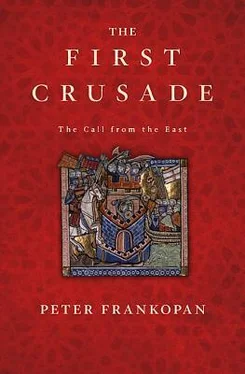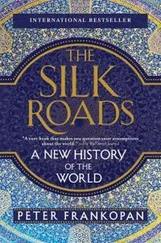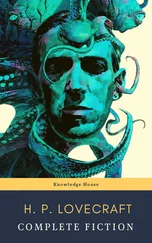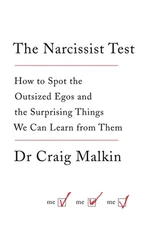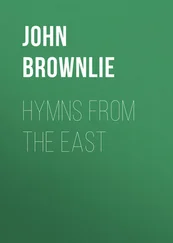Rather than include a comprehensive bibliography stretching to well over 2,000 books and articles, I thought it more useful to give some suggestions for starting points for the reader who would like to read more about the First Crusade in general, or about individual aspects of the expedition. Where possible, I have tried to list secondary works in English, though there are occasions when books and articles in other languages are unavoidable.
General
The Crusades have received a great deal of attention from historians, not least in recent years. Major volumes by Christopher Tyerman, God’s War: A New History of the Crusades (London, 2006), Jonathan Phillips, Holy Warriors: A Modern History of the Crusades (London, 2009), and Thomas Asbridge, The Crusades: The War for the Holy Land (London, 2010) take different approaches to the Crusades. Each provides a compelling overview and demonstrates that scholarship about the subject is in robust health. The doyen of Crusade historians is Jonathan Riley-Smith, whose The First Crusade and the Idea of Crusading (London, 1986) is still indispensable. His many other works about the Crusades in general and about the first expedition to Jerusalem in particular are invaluable – not least The First Crusaders 1095–1131 (Cambridge, 1997). John France’s Victory in the East (Cambridge, 1994) provides a fine military history of the expedition to Jerusalem. Also see Thomas Asbridge’s very readable The First Crusade: A New History (London, 2005).
There are a number of edited volumes based on conferences held to commemorate the nine hundredth anniversary of the Council of Clermont with collections of papers by leading scholars. The best are Jonathan Phillips’ The First Crusade: Origins and Impact (Manchester, 1997), Michel Balard’s Autour de la Première Croisade (Paris, 1996), and Alan Murray’s From Clermont to Jerusalem: The Crusades and Crusader Societies (Turnhout, 1998). Other edited volumes to recommend include Crusade and Settlement , edited by Peter Edbury (Cardiff, 1985), and The Experience of Crusading , edited by Marcus Bull, Norman Housely and Jonathan Phillips, 2 vols. (Cambridge, 2003). Also see Thomas Madden’s well-chosen collection of essays by leading scholars, The Crusades (Oxford, 2002). Alan Murray’s bibliography for the First Crusade is also invaluable.
Modern Byzantine and Arab historians have written surprisingly little about this subject. One exception is Jonathan Harris’ clear and useful Byzantium and the Crusades (London, 2003). Not to be missed is Paul Magdalino’s ‘The Byzantine background to the First Crusade’, in Canadian Institute of Balkan Studies (Toronto, 1996), pp. 3–38. Likewise Ralph-Johannes Lilie’s excellent study of Byzantine relations with the Crusaders, first published in German in 1981, available in a fine translation as Byzantium and the Crusader States 1096–1204 (tr. Morris and Ridings, Oxford, 1993). Carole Hillenbrand’s The Crusades, Islamic Perspectives (Edinburgh, 1999) is extremely helpful in looking at the west from the east.
Sources for the First Crusade
Anna Comnena by Georgina Buckler (Oxford, 1929) is still the only major monograph on the Alexiad and is excellent on the mechanics of the text, though less so on its interpretation. An important paper from the Belfast colloquium on Alexios I is essential, raising difficult questions about the composition of the text. The article by James Howard-Johnston in Margaret Mullett and Dion Smythe (eds.), Alexios I Komnenos (Belfast, 1996) is important and should be read alongside a slim but invaluable collection of essays edited by Thalia Gouma-Peterson, Anna Komnene and Her Times (New York, 2000). John France’s ‘Anna Comnena, the Alexiad and the First Crusade’, Reading Medieval Studies 10 (1984), pp. 20–38 gives a western Crusade view of the text.
The best major deconstruction of the Alexiad ’s chronology was done by Iakov Liubarskii ‘Zamechaniya k khronologii XI Knigi “Aleksiada” Anny Komninoi’, Vizantiiskii Vremennik 24 (1963), pp. 46–56, who examined the problems of Book XI of the Alexiad . This is reprised and advanced by Lilie in Appendix 1 of Byzantium and the Crusader States , pp. 259–76. The mistakes in the positioning of individual episodes elsewhere in the text have been noted by David Gress-Wright, ‘Bogomilism in Constantinople’, Byzantion 47 (1977), pp. 163–85; P. Gautier, ‘Discours de Théophylacte de Bulgarie’, Revue des Etudes Byzantines 20 (1962), esp. pp. 99–103; J. Gouillard, ‘L’Abjuration du moine Nil le Calabrais’, Travaux et Mémoires 2 (1968), pp. 290–303. Liubarskii’s ‘Ob istochnikakh “Aleksiady” Anny Komninoi’, Vizantiiskii Vremennik 25 (1965), pp. 99–120 remains the best attempt to identify the range of sources available to Anna Komnene, as well as picking up on several other instances where the Alexiad is chronologically flawed. A major new study of Anna Komnene’s work is needed to identify the full extent of the problems of the history’s sequence of events.
For the western narrative sources for the Crusade, a good starting point is Colin Morris, ‘The Gesta Francorum as Narrative History’, Reading Medieval Studies 19 (1993), pp. 55–72. More recently, however, see John France’s ‘The anonymous Gesta Francorum and the Historia Francorum qui ceperunt Iherusalem of Raymond of Aguilers and the Historia de Hierosolymitano itinere of Peter Tudebode: An analysis of the textual relationship between primary sources for the First Crusade’, in J. France and W. Zajac (eds.), The Crusades and their Sources: Essays presented to Bernard Hamilton (Aldershot, 1998), pp. 39–69. Also see France’s ‘The use of the anonymous Gesta Francorum in the early twelfthcentury sources for the First Crusade’, in Alan Murray, From Clermont to Jerusalem: The Crusades and Crusader Societies (Turnhout, 1998). pp. 29–42 and most recently, Jay Rubenstein, ‘What is the Gesta Francorum and who was Peter Tudebode?’, Revue Mabillon 16 (2005), pp. 179–204.
For Albert of Aachen, see Sue Edgington, ‘Albert of Aachen reappraised’, in Murray, From Clermont to Jerusalem , pp. 55–67. Also see Edgington’s ‘The First Crusade: Reviewing the evidence’, in Phillips, First Crusade , pp. 57–77, and Marc Carrier’s ‘L’image d’Alexis Ier Comnène selon le chroniqueur Albert d’Aix’, Byzantion 78 (2008), pp. 34–65. See R. Chazan, ‘The Hebrew First Crusade Chronicles’, Revue des Etudes Juives 133 (1974), pp. 235–54. Also Hillenbrand’s ‘The First Crusade: The Muslim perspective’, in Phillips, First Crusade , pp. 130–41.
The letter from Alexios I to Robert of Flanders has been roundly dismissed, Peter Schreiner, ‘Der Brief des Alexios I Komnenos an den Grafen Robert von Flandern und das Problem gefälschter byzantinischer Kaiserschreiben in den westlichen Quellen’, and Christian Gastgeber, ‘Das Schreiben Alexios I. Komnenos an Robert I. Flandern. Sprachliche Untersuchung’, both in Giuseppe de Gregorio and Otto Kresten (eds.), Documenti medievali Greci e Latini: Studi Comparativi (Spoleto, 1998), pp. 111–40, 141–85, though also see Carole Sweetenham, ‘Two letters calling Christians on Crusade’, in Robert the Monk’s History of the First Crusade (Aldershot, 2005), pp. 215–18. Both however consider the Byzantine position in Asia Minor to be positively healthy in the early 1090s. Note therefore Michel de Waha, ‘La lettre d’Alexis Comnène à Robert Ier le Frison’, Byzantion 47 (1977), pp. 113–25.
Читать дальше
